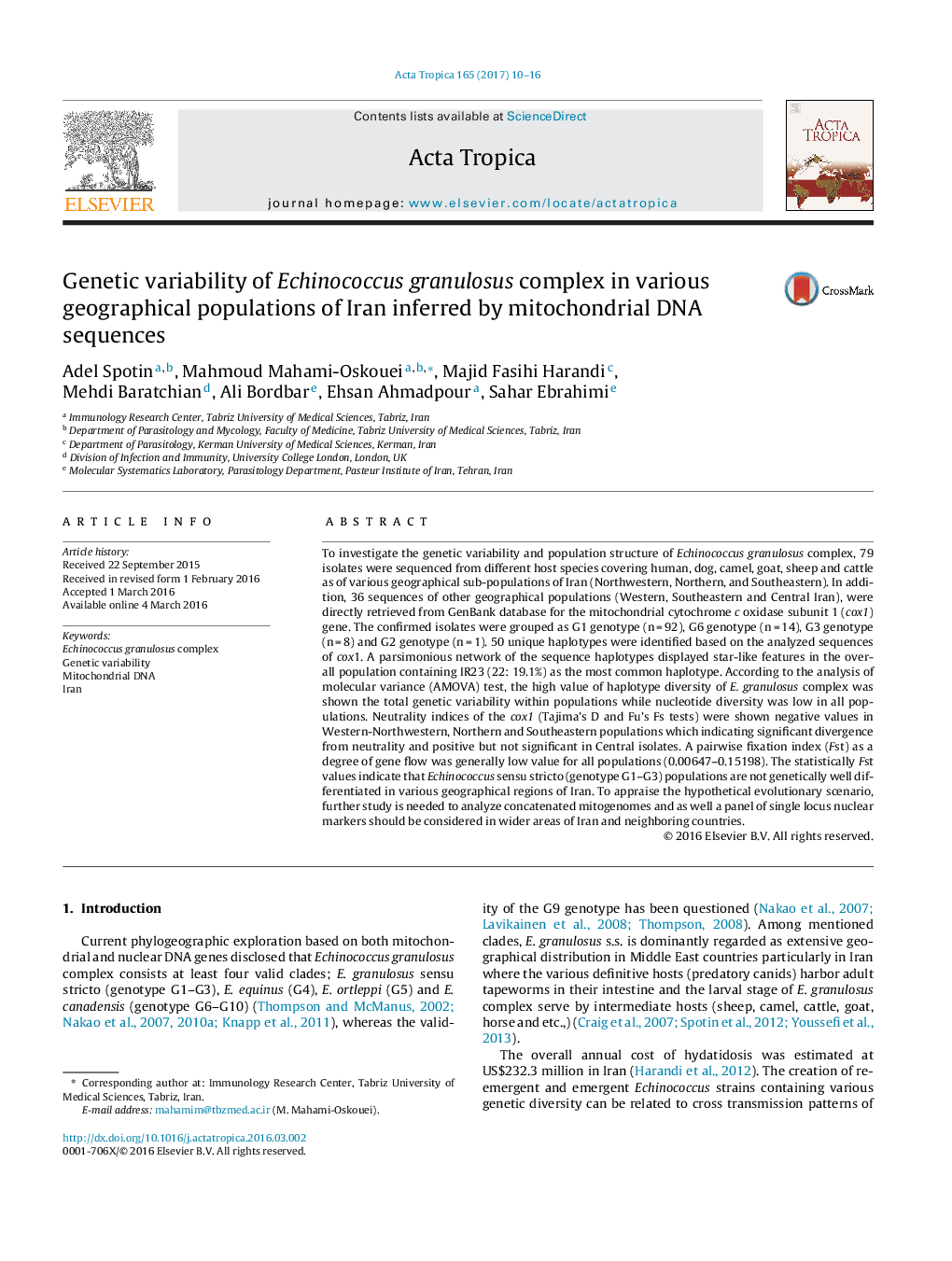| Article ID | Journal | Published Year | Pages | File Type |
|---|---|---|---|---|
| 5670816 | Acta Tropica | 2017 | 7 Pages |
â¢We evaluated the genetic diversity of E. granulosus complex from different populations in Iran.â¢The statistically Fst values identify Echinococcus populations are not genetically differentiated in Iran.â¢This study reflects new insights for parasitic gene flow in Iran.
To investigate the genetic variability and population structure of Echinococcus granulosus complex, 79 isolates were sequenced from different host species covering human, dog, camel, goat, sheep and cattle as of various geographical sub-populations of Iran (Northwestern, Northern, and Southeastern). In addition, 36 sequences of other geographical populations (Western, Southeastern and Central Iran), were directly retrieved from GenBank database for the mitochondrial cytochrome c oxidase subunit 1 (cox1) gene. The confirmed isolates were grouped as G1 genotype (n = 92), G6 genotype (n = 14), G3 genotype (n = 8) and G2 genotype (n = 1). 50 unique haplotypes were identified based on the analyzed sequences of cox1. A parsimonious network of the sequence haplotypes displayed star-like features in the overall population containing IR23 (22: 19.1%) as the most common haplotype. According to the analysis of molecular variance (AMOVA) test, the high value of haplotype diversity of E. granulosus complex was shown the total genetic variability within populations while nucleotide diversity was low in all populations. Neutrality indices of the cox1 (Tajima's D and Fu's Fs tests) were shown negative values in Western-Northwestern, Northern and Southeastern populations which indicating significant divergence from neutrality and positive but not significant in Central isolates. A pairwise fixation index (Fst) as a degree of gene flow was generally low value for all populations (0.00647-0.15198). The statistically Fst values indicate that Echinococcus sensu stricto (genotype G1-G3) populations are not genetically well differentiated in various geographical regions of Iran. To appraise the hypothetical evolutionary scenario, further study is needed to analyze concatenated mitogenomes and as well a panel of single locus nuclear markers should be considered in wider areas of Iran and neighboring countries.
Graphical abstractDownload high-res image (114KB)Download full-size image
